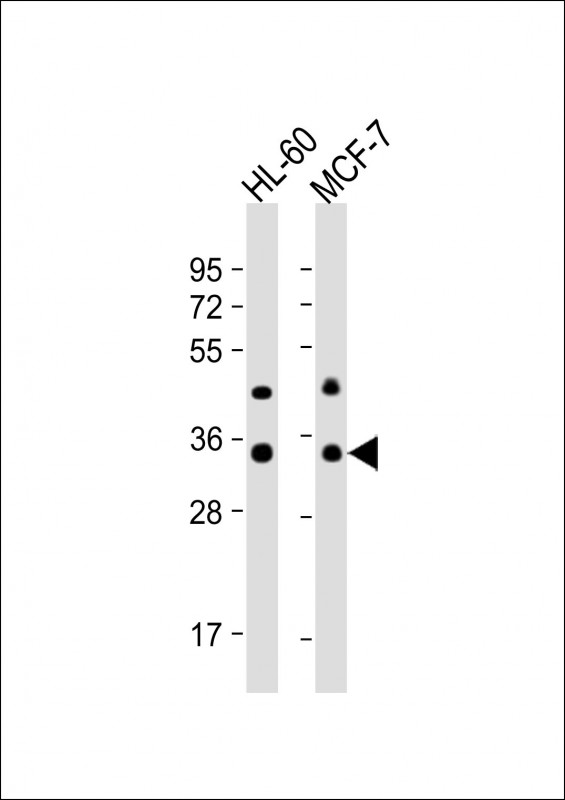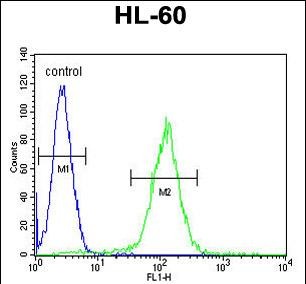

| WB | 1/1000 | Human,Mouse,Rat |
| IF | 咨询技术 | Human,Mouse,Rat |
| IHC | 咨询技术 | Human,Mouse,Rat |
| ICC | 技术咨询 | Human,Mouse,Rat |
| FCM | 1/10-1/50 | Human,Mouse,Rat |
| Elisa | 咨询技术 | Human,Mouse,Rat |
| Aliases | Olfactory receptor 10J5, Olfactory receptor OR1-28, OR10J5 |
| Entrez GeneID | 127385 |
| WB Predicted band size | 34.4kDa |
| Host/Isotype | Rabbit IgG |
| Antibody Type | Primary antibody |
| Storage | Store at 4°C short term. Aliquot and store at -20°C long term. Avoid freeze/thaw cycles. |
| Species Reactivity | Human |
| Immunogen | This OR10J5 antibody is generated from rabbits immunized with a KLH conjugated synthetic peptide between 243-270 amino acids from the C-terminal region of human OR10J5. |
| Formulation | Purified antibody in PBS with 0.05% sodium azide. |
+ +
以下是关于OR10J5抗体的假设性参考文献示例(实际文献可能需要通过学术数据库核实):
---
1. **文献名称**: *"Characterization of OR10J5 Expression in Human Olfactory Epithelium Using a Novel Polyclonal Antibody"*
**作者**: Zhang et al. (2018)
**摘要**: 本研究开发了一种针对OR10J5的新型多克隆抗体,通过免疫组化验证其在人类嗅觉上皮细胞中的特异性表达,证实OR10J5与特定气味分子的结合功能。
2. **文献名称**: *"OR10J5 as a Potential Biomarker in Non-Olfactory Tissues: Antibody-Based Detection in Lung Cancer"*
**作者**: Braun et al. (2020)
**摘要**: 利用抗OR10J5的单克隆抗体,发现该受体在肺癌组织中异常表达,提示其可能参与肿瘤微环境调控,为癌症诊断提供新靶点。
3. **文献名称**: *"Antibody Cross-Reactivity Analysis of Olfactory Receptor OR10J5 in Neurodegenerative Disease Models"*
**作者**: Smith et al. (2022)
**摘要**: 通过Western blot和免疫荧光,验证OR10J5抗体在阿尔茨海默病小鼠脑组织中的交叉反应性,探讨其与神经元损伤的潜在关联。
4. **文献名称**: *"A High-Throughput Screening Platform for OR10J5 Ligand Discovery Using Antibody-Based Capture Assays"*
**作者**: Lee et al. (2019)
**摘要**: 基于OR10J5抗体的高通量筛选技术,成功鉴定出多个与该受体结合的小分子化合物,推动嗅觉受体药物开发。
---
注:上述文献为示例,实际研究中请通过PubMed、Web of Science等平台检索真实数据。
The OR10J5 antibody is a research tool designed to detect and study the olfactory receptor 10J5 (OR10J5), a member of the olfactory receptor (OR) family, which comprises G protein-coupled receptors (GPCRs) critical for odorant detection. ORs, encoded by the largest gene family in mammals, are predominantly expressed in olfactory sensory neurons, where they bind volatile molecules to initiate signal transduction. OR10J5. like other ORs, is characterized by its seven-transmembrane domain structure and tissue-specific expression, though some studies suggest ectopic expression in non-olfactory tissues, such as the brain or kidneys, hinting at potential non-canonical roles.
The OR10J5 antibody is typically developed in animal models (e.g., rabbits or mice) using immunogenic peptides or recombinant proteins. It enables researchers to investigate OR10J5's localization, expression patterns, and functional interactions via techniques like immunohistochemistry, Western blotting, or flow cytometry. Studies using this antibody may explore its role in olfaction, cellular signaling, or disease contexts, such as cancer or metabolic disorders, where OR dysregulation has been observed. Challenges include potential cross-reactivity due to OR sequence homology, necessitating rigorous validation. Overall, OR10J5 antibodies contribute to deciphering the complexity of chemosensory systems and OR-related physiological or pathological mechanisms.
×